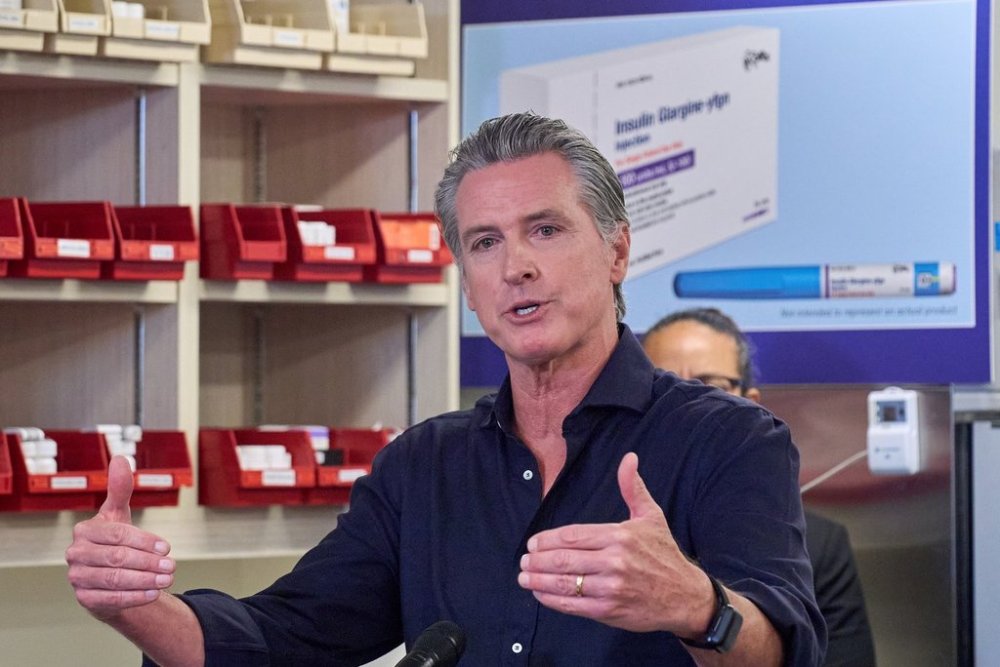California to begin selling affordable state-branded insulin beginning next year
Advertisement
Read this article for free:
or
Already have an account? Log in here »
To continue reading, please subscribe:
Monthly Digital Subscription
$1 per week for 24 weeks*
- Enjoy unlimited reading on winnipegfreepress.com
- Read the E-Edition, our digital replica newspaper
- Access News Break, our award-winning app
- Play interactive puzzles
*Billed as $4.00 plus GST every four weeks. After 24 weeks, price increases to the regular rate of $19.00 plus GST every four weeks. Offer available to new and qualified returning subscribers only. Cancel any time.
Monthly Digital Subscription
$4.75/week*
- Enjoy unlimited reading on winnipegfreepress.com
- Read the E-Edition, our digital replica newspaper
- Access News Break, our award-winning app
- Play interactive puzzles
*Billed as $19 plus GST every four weeks. Cancel any time.
To continue reading, please subscribe:
Add Free Press access to your Brandon Sun subscription for only an additional
$1 for the first 4 weeks*
*Your next subscription payment will increase by $1.00 and you will be charged $16.99 plus GST for four weeks. After four weeks, your payment will increase to $23.99 plus GST every four weeks.
Read unlimited articles for free today:
or
Already have an account? Log in here »
LOS ANGELES (AP) — Gov. Gavin Newsom said Thursday that California will begin selling affordable insulin under its own label on Jan. 1, nearly three years after he first announced a partnership to sell state-branded generic drugs at lower prices.
But California won’t be the only state making lower-cost insulin available. The nonprofit Civica said it will also distribute its economical diabetes medication to pharmacies nationwide. California began partnering with Civica in 2023 for its “CalRx” brand of insulin and put $50 million toward its development, the company said.
Starting in the new year, insulin pens will be available at a recommended price of $11 per pen, or a maximum of $55 for a five-pack, Civica said.

“You don’t need a new prescription,” Newsom said at a news conference in Los Angeles. “It’s access on the basis of affordability.”
It is one piece of California’s effort to lower prescription drug costs by offering generics as a cheaper alternative. Newsom announced in April that the state will sell the overdose medication Naloxone. The drug, available as a nasal spray and in an injectable form, is considered a key tool in the battle against a nationwide overdose crisis.
For the insulin development, the state entered a 10-year deal with Civica and Biocon Biologics in early 2023. Officials said then that they hoped California’s emergence as an insulin-maker would prompt prices to collapse.
The new pens will be interchangeable with glargine, the generic alternative for more expensive once-a-day injections that regulates blood sugar. As a comparison, the equivalent of a five-pack of Eli Lilly’s Rezvoglar sells to pharmacies for more than $88, according to data compiled by the governor’s office, but consumers may pay a different price based on their insurance.
About 38 million Americans — and roughly 3.5 million Californians — have diabetes, according to the American Diabetes Association.
Chris Noble, organizing director of Health Access California, a statewide consumer health care advocacy group, welcomed Newsom’s announcement, saying efforts by California and others to develop a competing generic will bring relief to patients who have seen drug prices spike in recent years.
“California consumers need relief now, so health advocates are relieved to see CalRx moving quickly to lower insulin costs for the people of California while continuing to pursue other needed prescription drug cost solutions,” Noble said in a statement Thursday.
There could be risks. State analysts have warned that California’s entry into the market could prompt other manufacturers to reduce the availability of their drugs, a potential unintended consequence.
State lawmakers approved $100 million for the project in 2022, with $50 million dedicated to developing three types of insulin and the rest set aside to invest in a manufacturing facility.
According to state documents from 2023, the proposed program could save many patients between $2,000 and $4,000 a year. In addition, lower costs could result in substantial savings because the state buys the product every year for the millions of people on its publicly funded health plans.

